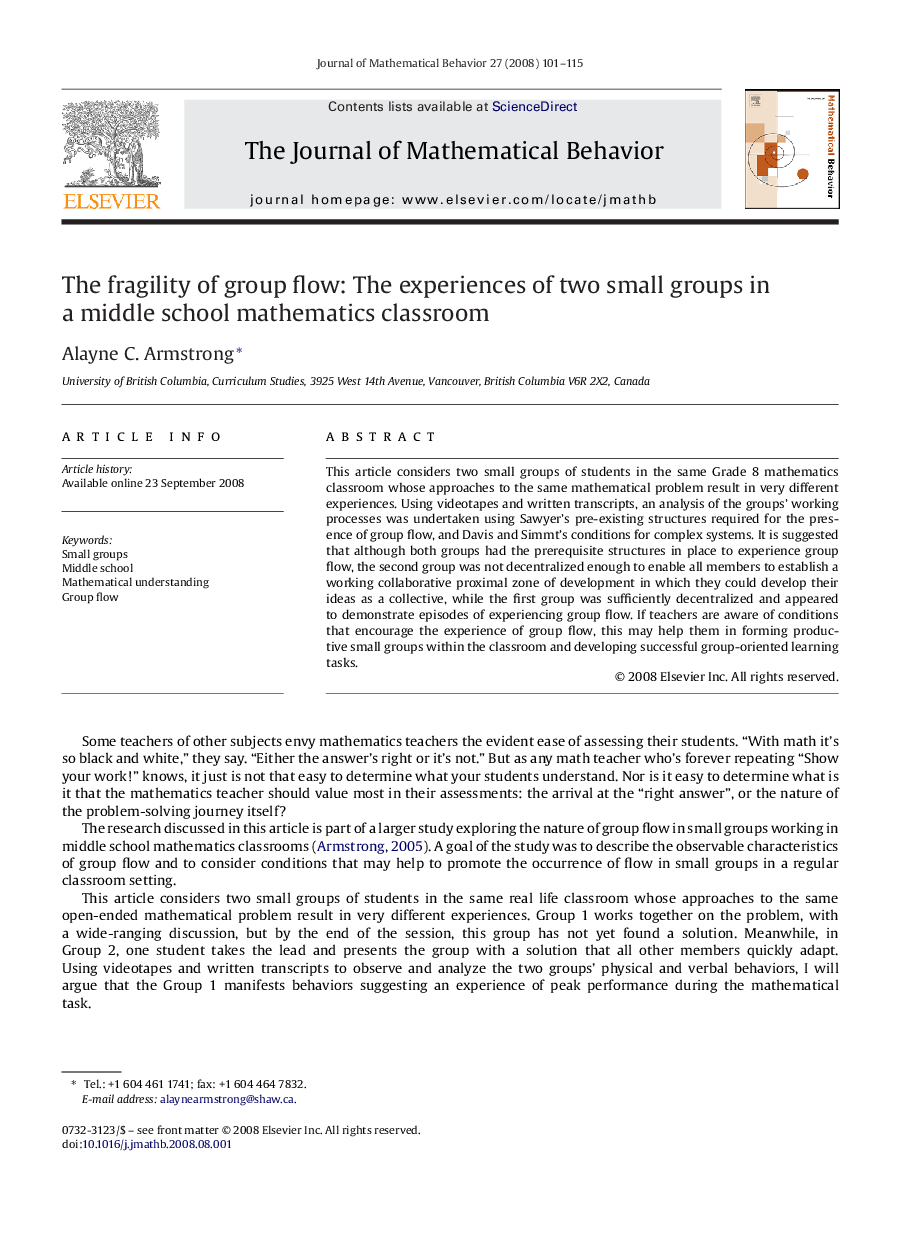| Article ID | Journal | Published Year | Pages | File Type |
|---|---|---|---|---|
| 360879 | The Journal of Mathematical Behavior | 2008 | 15 Pages |
This article considers two small groups of students in the same Grade 8 mathematics classroom whose approaches to the same mathematical problem result in very different experiences. Using videotapes and written transcripts, an analysis of the groups’ working processes was undertaken using Sawyer's pre-existing structures required for the presence of group flow, and Davis and Simmt's conditions for complex systems. It is suggested that although both groups had the prerequisite structures in place to experience group flow, the second group was not decentralized enough to enable all members to establish a working collaborative proximal zone of development in which they could develop their ideas as a collective, while the first group was sufficiently decentralized and appeared to demonstrate episodes of experiencing group flow. If teachers are aware of conditions that encourage the experience of group flow, this may help them in forming productive small groups within the classroom and developing successful group-oriented learning tasks.
